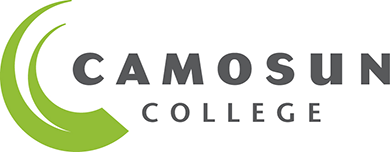Archived Content
This archived web page remains online for reference, research or record-keeping purposes. This page will not be altered or updated and may contain out of date information. If you’re looking for specific information and haven’t found it, please contact communications@camosun.ca.

Camosun scientist explores new methods to detect pesticides in fresh produce
May 30, 2013
Camosun College research chemist Blair Surridge is developing comprehensive, cost-effective methods to detect pesticide residues and other contaminants on fresh produce. The two-year project is in its early stages, but affordable and accessible screening methods to detect even minute chemical residues on fruits and vegetables may eventually translate into better quality assurance for local farmers, retail outlets and consumers.

Key to this new research is Camosun's automated sample extraction equipment that was acquired with help from a grant from the Natural Sciences and Engineering Research Council of Canada, NSERC. The sophisticated equipment means Camosun can offer research services to clients like MB Labs in Sidney, a microbiology and chemical analysis firm serving a variety of industrial and residential clients.
"Cost is the main barrier to consistent and reliable produce screening," says Surridge. "With automation, we can greatly reduce the cost of analysis while expanding the frequency and scope of the testing." The extraction machine will be calibrated to detect more than 70 known pesticide compounds, and standardized to broadly screen for different chemical classes.
Pesticides and other chemical contaminants can get into foods in a number of different ways, both before harvest and during transit. A quick and affordable detection method can provide safety assurance for vendors and consumers, and indicate when further investigation is required.
Surridge presented his preliminary findings at the 48th Annual Western Canada Trace Organics Workshop last month in Vancouver. Typical workshop topics include analysis of food, water and environmental samples for chemicals like plastics and hydrocarbons. Scientists present updates and discuss challenges, generating lively discussion and idea sharing. "It's a great way to validate the science you are doing and get new ideas for method development," says Surridge.
"This project shows how applied research and innovation mobilizes NSERC funds to benefit the greater community," says Tim Walzak, Director of Camosun Applied Research and Innovation, CARI. "Our Applied Chemistry and Biotechnology faculty and students gain experience on leading edge equipment and emerging technologies, co-op students receive valuable work experience to help launch their careers, and local businesses gain the tools to provide better service and assurances to clients and consumers."
CARI is committed to building partnerships with industry, conducting research on behalf of public and private sectors and optimizing the use of Camosun's infrastructure.
Media Contact
Blair Surridge, M.Sc.
Chair of Applied Chemistry and Biotechnology Program
Camosun College (Lansdowne Campus)
Office: 250-370-3438
Surridgeb@Camosun.bc.ca
Last updated: April 16, 2019 12:38 pm


